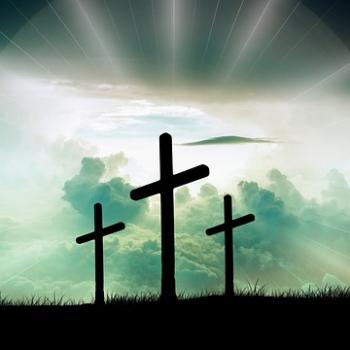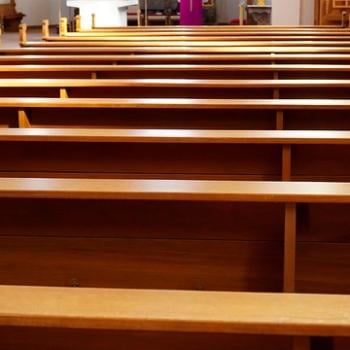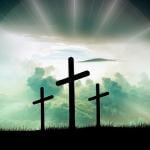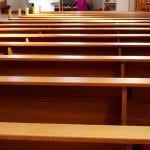THE QUESTION:
What are America’s biggest local Protestant churches?
THE RELIGION GUY’S ANSWER:
Through American history, Catholic parishes tended to have large memberships while local Protestant congregations were relatively small, with a few prominent exceptions. But beginning in the 1970s, the U.S. has entered a remarkable era with by now at least 1,750 Protestant “megachurches,” typically defined by average (pre-Covid) weekend attendance of 2,000 or more.
These flocks often say they’re simply “Christian,” but The Guy insists the “Protestant” label is accurate. Most are young and they’re overwhelmingly “evangelical” in belief and ministry. Which are the biggest of these “big box” churches?
Outreach magazine posts annual listings of the 100 largest, based on churches’ own reports, and also calculates the 100 fastest-growing congregations. Both rankings are available at https://outreach100.com/largest-churches-in-america/. The data are collected by the Southern Baptist Convention’s Lifeway Research and the Hartford Institute for Religion Research.
Here are the top 20:
Life Church, Edmond, Oklahoma (85,000 weekend attendance counting all off-site locations; affiliated with the Evangelical Covenant Church).
Church of the Highlands, Birmingham, Alabama (60,000; nondenominational).
Lakewood Church, Houston (45,000; nondenominational).
Crossroads Church, Cincinnati (35,253; nondenominational)
Christ’s Church of the Valley, Peoria, Arizona; (30,482; Independent Christian Churches – see explanation below)
Saddleback Church, Lake Forest, California (28,000; Southern Baptist Convention)
Elevation Church, Matthews, North Carolina (26,000; Southern Baptist)
Southeast Christian Church, Louisville (25,917; Independent Christian Churches)’
Christ Fellowship Church, Palm Beach Gardens, Florida (25,000; nondenominational)
North Point Ministries, Alpharetta, Georgia (24,273; nondenominational)
Fellowship Church, Grapevine, Texas (24,162; Southern Baptist)
Central Church, Henderson, Nevada (21,055; nondenominational)
Mount Zion Baptist Church, Nashville (21,000; Full Gospel Baptist Church Fellowship)
Gateway Church, Southlake, Texas (20,500; nondenominational)
Bayside Church, Roseville, California (20,000; Evangelical Covenant Church)
Dream City Church, Phoenix (20,000; Assemblies of God)
LCBC Church, Manheim, Pennsylvania (19,000; nondenominational)
Woodlands Church, The Woodlands, Texas (18,385; Southern Baptist)
The Rock Church, San Diego (18,000; nondenominational)
12Stone Church, Lawrenceville, Georgia (17,000; Wesleyan)
Note that in the preceding seven years, North Point was ranked the biggest five times and Highlands twice.
None of the top 20 and few of the top 100 are affiliated with the seven “mainline” denominations that follow a more pluralistic approach to faith. Yet in Outreach magazine’s separate listing of the fastest-growing U.S. congregations, first place goes to the Lutheran Church of Hope in West Des Moines, Iowa, founded in 1994, which is affiliated with the “mainline” Evangelical Lutheran Church in America. (For reasons we’ll bypass here, standard Protestant taxonomy considers the ELCA to be “mainline” rather than “evangelical” despite the latter word in its name.)
In one year, Hope reported its average attendance including satellite locations jumped by 117%, to 9,915. The Iowans tell Outreach the keys to success are close fellowship through a network of members joining “small groups,” and careful strategic planning focused on old-fashioned prayer, outreach, and “biblical literacy.”
The other top 10 fastest growing congregations:
Summit Church, Durham, North Carolina (Southern Baptist)
Eastlake Church, Chula Vista, California (nondenominational)
Vineyard Columbus, Columbus, Ohio (Vineyard Churches)
Flatirons Community Church, Lafayette, Colorado (nondenominational)
First Baptist Church, Houston, Texas (Southern Baptist)
Crossroads Christian Church, Corona, California (Independent Christian Churches)
Liquid Church, Parsippany, New Jersey (nondenominational)
Word of Faith Family Worship Cathedral, Austell, Georgia (nondenominational)
Gateway Church, Southlake, Texas (nondenominational)
The Hartford Institute issued an important survey in 2020 on super-sized congregations, posted at http://hartfordinstitute.org/megachurch/2020_megachurch_report.pdf/. It comments that “in virtually every city and region, across denominations and less formal church networks, megachurch leaders continue to set the pace for other church leaders, both directly and indirectly.” This impact is seen in “vision, values, innovations and priorities” and in leaders’ teaching via “conferences, books, coaching networks, podcasts, social-media posts, and personal relationships.”
Hartford said the U.S. megachurches it examined have median totals of 4,092 average attendance (counting all weekend services and including satellite locations) and 5,982 regular participants, generally up by one-third from a study five years prior. Notably, 58% are somewhat multiracial in makeup, quite in contrast with the rest of U.S. Protestantism, 70% operate at multiple locations, and 66% had helped “plant” a new sister congregation in the preceding decade.
As in the above lists, Hartford said 40% nationwide were wholly self-governing and “nondenominational,” having no affiliation with traditional denominations beyond the local flock. The U.S. Religion Census has just reported that the nondenominationals taken together form America’s largest Protestant body, with 21 million attenders and 44,319 congregations, far exceeding Southern Baptist Convention numbers.
Surprise: A few outspoken preachers give the impression that megachurches are a strong force in conservative political mobilization. But in fact 63% of participants in the Hartford survey said their megachurches avoid discussing political issues and less than a fifth sponsored such routine activities as distributing voter guides or voter-registration efforts. Other scholarship indicates white evangelicals are actually the least politicized segment in U.S. religion.
Added note: The strictly autonomous “Independent Christian Churches” form a distinct identifiable group that originated in the early 19th Century “restoration” movement. They associated with the annual North American Christian Convention, now the Spire network with broader resources. The two other major “restoration” groups are the Churches of Christ, similar independents characterized by avoiding musical instruments in worship, and a more centralized and pluralistic “mainline” denomination, the Christian Church (Disciples of Christ).












